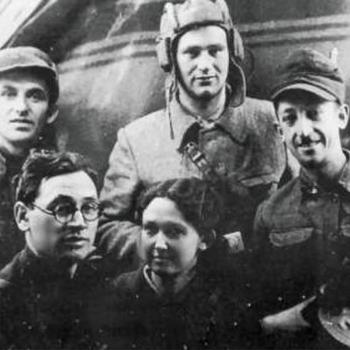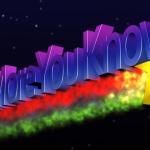
When I was a child, women did not preach – at least not in the Baptist, Methodist or Presbyterian churches in my small town. The pastor was invariably a man with a family. He ran the church, and his wife took care of their home and the children. But today’s Christian churches don’t necessarily follow that model, nor did churches in the distant past. Ancient texts uncovered in the last 20 or so years describe a church that we would barely recognize today. One major difference between then and now is the role of women in the church. So, what was the role of early Christian women?
Most Christians are familiar with Mary, the mother of Jesus, Mary Magdalene, and sisters Mary and Martha. Beyond that, we may draw a blank about women who were associated with the early church. Who were they? What did they do? And why are they important?
The Apostle Paul’s Contradictions
Before we talk about a few early Christian women, let’s take a look at the Apostle Paul, who had quite a bit to say about women in the church. The problem for me is that his words seem contradictory at times.
In one verse, he apparently said that women are equal to men: “There is neither Jew nor Gentile, neither slave nor free, nor is there male and female, for you are all one in Christ Jesus” (Galatians 3:28).
In another verse, he instructed the Christians at Corinth on praying and preaching (e.g., prophesying) and said that a woman who prays or prophesies with her head uncovered “disgraces her head.”
Paul seems to be saying that women may preach as long as they cover their heads — until we read a few more passages.
In 1 Timothy 2:11-12, Paul writes: “Let a woman learn in silence with full submission. I permit no woman to teach or to have authority over a man. She is to keep silent.”
In Corinthians 14:34-35, he says, “…women should be silent in churches. For they are not permitted to speak but should be subordinate as the law says. If there is anything they desire to know, let them ask their husbands at home. For it is shameful for a woman to speak in church.”
Paul seems to flip-flop on the issue of women as leaders. What is he trying to say? I’ll admit that I don’t know, and I sometimes doubt whether people who presume to speak about Paul’s writings with great authority know, either. It’s no wonder Christians are still arguing about the role of women in the church.
One theory is that Paul’s letters to various churches addressed specific problems in specific churches. His instructions to one church might not apply to other churches.
He might, for example, admonish women in one church to be quiet because they were disrupting services. He might warn another church against associating itself with a women’s movement that promoted abortions and sexual promiscuity in the Roman Empire.
Recently Discovered Texts
Depending on how you interpret Paul’s writings, you may decide that his warnings against early Christian women speaking in church fly in the face of reality. Texts discovered in the recent past have revealed that women were leaders in the early church until men began to create a hierarchy that excluded them.
According to Karen L. King, professor of New Testament Studies and Ancient Christianity at Harvard University, the history of women in ancient Christianity has been “almost completely revised” in the last 20 years.
She explained that women are entering the field in record numbers, and in doing so, they have raised new questions, developed new methods and “sought evidence of women’s presence in neglected texts….”
Even stories we thought we knew are being rewritten. A case in point is Mary Magdalene. The church labeled this Mary an adulteress and repentant prostitute for nearly 2,000 years, King noted. Yet, she wasn’t.
“Discoveries of new texts from the dry sands of Egypt, along with sharpened critical insight, have now proven that this portrait of Mary is entirely inaccurate. She was indeed an influential figure but as a prominent disciple and leader of one wing of the early Christian movement that promoted women’s leadership.”
One of the Best-kept Secrets
Mary Magdalene and other Jewish women such as Susanna and Joanna were among Christ’s earliest followers. They traveled with him and provided financial support for his ministry, according to King. They were as much disciples and apostles as the men who followed Christ.
“Women were the last disciples at the cross and the first at the empty tomb. They remained integral to the work of the church in its early centuries,” said the Christian History Institute, a non-profit Christian education organization.
“One of the best-kept secrets in Christianity is the enormous role that women played in the early church. Though they leave much unsaid, still, both Christian and secular writers of the time attest many times to the significant involvement of women in the early growth of Christianity,” the organization said.
By the 2nd century, female Christians outnumbered male members, which led Bishop Cyprian of Carthage to complain that Christian women had difficulty finding suitable husbands.
Prominent Roles
It seems that Christ’s female disciples were loyal to the Lord, even remaining with him when it was dangerous and his male followers had fled.
“Luke declares that the women who had followed Jesus from Galilee still followed along as Christ was carried to the tomb. Mark details the care with which Mary Magdalene and Mary the mother of Jesus noted where he was laid, while Matthew tells how they kept watch over the sepulcher after the men had left,” the Christian History Institute said.
It was the women – not the men – who discovered Christ’s empty tomb and shared the news with the other disciples. Yes, I said “other” disciples because these women were as much disciples of Christ as his 12 male followers were.
“An Apostle to the Apostles”
The Christian History Institute noted that the early church saw Mary Magdalene as “the apostle to the apostles” and that “Luke relied heavily on the testimony of women when he wrote the books of Luke and Acts. The involvement of women continued in the first few decades of the church, attested by both biblical and extra-biblical sources.”
Early Christians met for services in people’s homes. The use of “house churches” spread from city to city across the Roman Empire, and women were often the homeowners and leaders, according to the institute.
Among the early Christian women who led these churches were Priscilla, Chloe, Lydia, Apphia, Nympha, the mother of John Mark, and others.
Junia was another early church leader and apostle. No one questioned her role as a female apostle until the Middle Ages when men who were translating scripture changed her name to its masculine form. Suddenly, Junia was a man.
Phoebe was also a leader in the early church. Paul mentions her in Romans 16, where he calls her “a deacon of the church” and refers to her as a prostatis or overseer.
“This term in its masculine form, prostates, was later used by the Apostolic Fathers to designate the one presiding over the Eucharist,” according to the institute.
But there’s more. “The four daughters of Philip appear in Acts 21:9 as prophetesses,” and “another prophetess attested to by extra-biblical tradition is Ammia, who prophesied in Philadelphia during New Testament times and was received with reverence throughout Asia Minor.”
Women Reaching Women
In the 2nd century, Clement of Alexandria noted that female colleagues traveled with the apostles on their missionary trips. He explained that the women could share the Christian message with housewives and other women, which the male disciples could not do without causing a scandal.
Another 2nd-century leader, who may or may not have existed, was Catherine of Alexandria. She was the patron saint of scholars and philosophers and supposedly debated 50 scholars and brought them to Christ. For her efforts, she was executed, according to the story.
Words & Deeds
Many early Christian women were intellectually and spiritually gifted. Some were upper-class women who studied Hebrew and Greek along with God’s word, and they became quite knowledgeable.
In the early 400s, “Augustine could declare that ‘any old Christian woman’ was better educated in spiritual matters than many a philosopher,” the Christian History Institute said.
Another woman of note was St. Thecia. Some 3rd-century writers, including Gregory of Nazianzus and Basil of Caesarea, treated her story as factual, and a pilgrim named Egeria told of visiting the area where St. Thecia built a teaching center and a hospital.
A German archaeological team excavated the site in 1908 and found the outline of a basilica, numerous cisterns, several churches, and other signs of habitation.
Yet, some religious scholars believe she was a literary invention.
As the story goes, St. Thecia was a noblewoman who converted to Christianity after she heard Paul speak. She gave up her old life and began following Paul despite the persecution and hardships she encountered.
She supposedly traveled through Asia Minor with the apostle before settling near Seleucia, where she taught, preached, healed, and baptized people.
Widows also held a special place in the early church. “Besides the outstanding achievements of individual women stood the ministry of consecrated women in specialized orders,” according to the Christian History Institute.
“These orders included ecclesial widows, virgins, presbyteresses, and deaconesses. Sometimes such women were formally ordained and sat with the rest of the clergy in front of the congregation.”
Men Take Control
By the third and fourth centuries, men were establishing a church hierarchy that excluded women. “Every variety of ancient Christianity that advocated the legitimacy of women’s leadership roles was erased or suppressed,” according to Dr. King.
“This erasure has taken many forms,” she noted. “Collections of prophetic oracles were destroyed. For example, at least one woman’s place in history was obscured by turning her into a man!” She’s referring to Junia, of course. All it took was a simple edit that changed Junia’s feminine name to a masculine one.
More famously, church leaders linked Mary Magdalene to an unnamed sinner who anointed Christ’s feet. In doing so, they removed her importance as an apostle, teacher, and prophet from the historical record for the better part of 2,000 years.
The fiction surrounding Mary Magdalene “was invented at least in part to undermine her influence and with the appeal to her apostolic authority to support women in roles of leadership,” King said. No doubt.
But despite their best efforts, male church leaders were unable to completely erase the contributions of Christian women to the church.
“What’s remarkable is how much evidence has survived systematic attempts to erase women from history and with them the warrants and models for women’s leadership. The evidence presented here is but the tip of an iceberg,” King added.
Early Christian Women
My hope is that more Christians – especially Christian women – learn about the women who played leadership roles in the early church. These women taught and preached and helped spread the new religion across the Roman empire. Their stories need to be told, and future generations of women need to be inspired by them.
Harvard professor Dr. Karen L. King’s post, “Women in Ancient Christianity: The New Discoveries,” is worth reading in its entirety, which you may do by clicking here.
To read the Christian History Institute’s article, “The Neglected History of Women in the Early Church,” click here.
Another article worth reading is “Remembering the Women Who Founded Historical Christianity” by one of my favorite Patheos contributors, Keith Giles. Click here to read it.


















